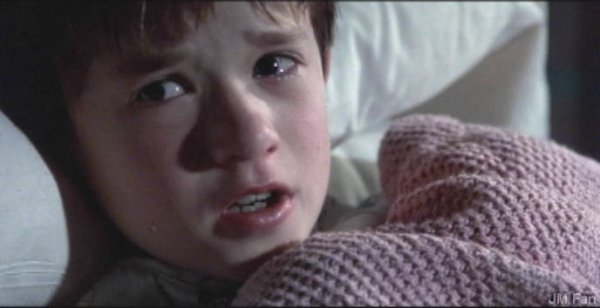I'm at work and haven't listned to the demo. There is no system here worth listening to it on. But honestly, John, I suspect there are things I don't hear that others do. First of all, and you'll like this one:
You know that whole thing about perception and the human ability to accept and maybe even psycho-alter playback so that what we hear sounds more like what we hear in our natural environment? I think I may be pretty good at that. And I'll call it a blessing.
The second one you won't like as much:
I believe that many audiophiles are gearheads, tweakers, integrators, synergizers....this is much of their joy in the hobby and, as far as I can tell, a whole lot of them are not happy just being happy. I know them well; I used to be one of them. They've got to be tweaking integrating, synergizing, etc. It's the nature of the beast. As a result, they hear all kinds of things that nobody else hears. Not me, not their wives, not their friends, almost no one in blind listening tests... My decades in this game, from newsletters and Saturday mornings at the local shop to internet audiophile discussion boards, have left me believing that this class of audiophiles I once belonged to - and at this point it's the majority - and their suppliers honestly believe they hear all kinds of problems that don't exist and spend thousands of hours and dollars trying to solve them.
I think digital audio is the ultimate example. By design, it swept away hundreds of audio reproduction challenges. Audiophiles have, in turn, found new, esoteric, often immeasurable, and even when measurable often statistically inaudible, problems to fill the gap. Because they need the problems.
I don't expect you to join me in that belief, John, but there it is. And because that's what I have observed, my criteria for believing in one of tese problems is, as I said in another thread recently, quite simple: 1) I can hear it, or 2) Those who claim they can have verifiable evidence of its existence.
You guys drop the ball on #2 all the time. Once in awhile? Something we haven't figured out how to measure yet...maybe. All the time? Don't tell me it's my hearing or my system unless you can show me some game. That was a lot of words. I said it all more clearly and concisely in a post a few years ago on another board that went like this:

I SEE JITTER, PEOPLE...
I suspect this will get a reaction. I won't respond, because if I do your thread will be completely de-railed. MHO. YMMV. Enjoy it if you can.
Tim
You know that whole thing about perception and the human ability to accept and maybe even psycho-alter playback so that what we hear sounds more like what we hear in our natural environment? I think I may be pretty good at that. And I'll call it a blessing.
The second one you won't like as much:
I believe that many audiophiles are gearheads, tweakers, integrators, synergizers....this is much of their joy in the hobby and, as far as I can tell, a whole lot of them are not happy just being happy. I know them well; I used to be one of them. They've got to be tweaking integrating, synergizing, etc. It's the nature of the beast. As a result, they hear all kinds of things that nobody else hears. Not me, not their wives, not their friends, almost no one in blind listening tests... My decades in this game, from newsletters and Saturday mornings at the local shop to internet audiophile discussion boards, have left me believing that this class of audiophiles I once belonged to - and at this point it's the majority - and their suppliers honestly believe they hear all kinds of problems that don't exist and spend thousands of hours and dollars trying to solve them.
I think digital audio is the ultimate example. By design, it swept away hundreds of audio reproduction challenges. Audiophiles have, in turn, found new, esoteric, often immeasurable, and even when measurable often statistically inaudible, problems to fill the gap. Because they need the problems.
I don't expect you to join me in that belief, John, but there it is. And because that's what I have observed, my criteria for believing in one of tese problems is, as I said in another thread recently, quite simple: 1) I can hear it, or 2) Those who claim they can have verifiable evidence of its existence.
You guys drop the ball on #2 all the time. Once in awhile? Something we haven't figured out how to measure yet...maybe. All the time? Don't tell me it's my hearing or my system unless you can show me some game. That was a lot of words. I said it all more clearly and concisely in a post a few years ago on another board that went like this:

I SEE JITTER, PEOPLE...
I suspect this will get a reaction. I won't respond, because if I do your thread will be completely de-railed. MHO. YMMV. Enjoy it if you can.
Tim






